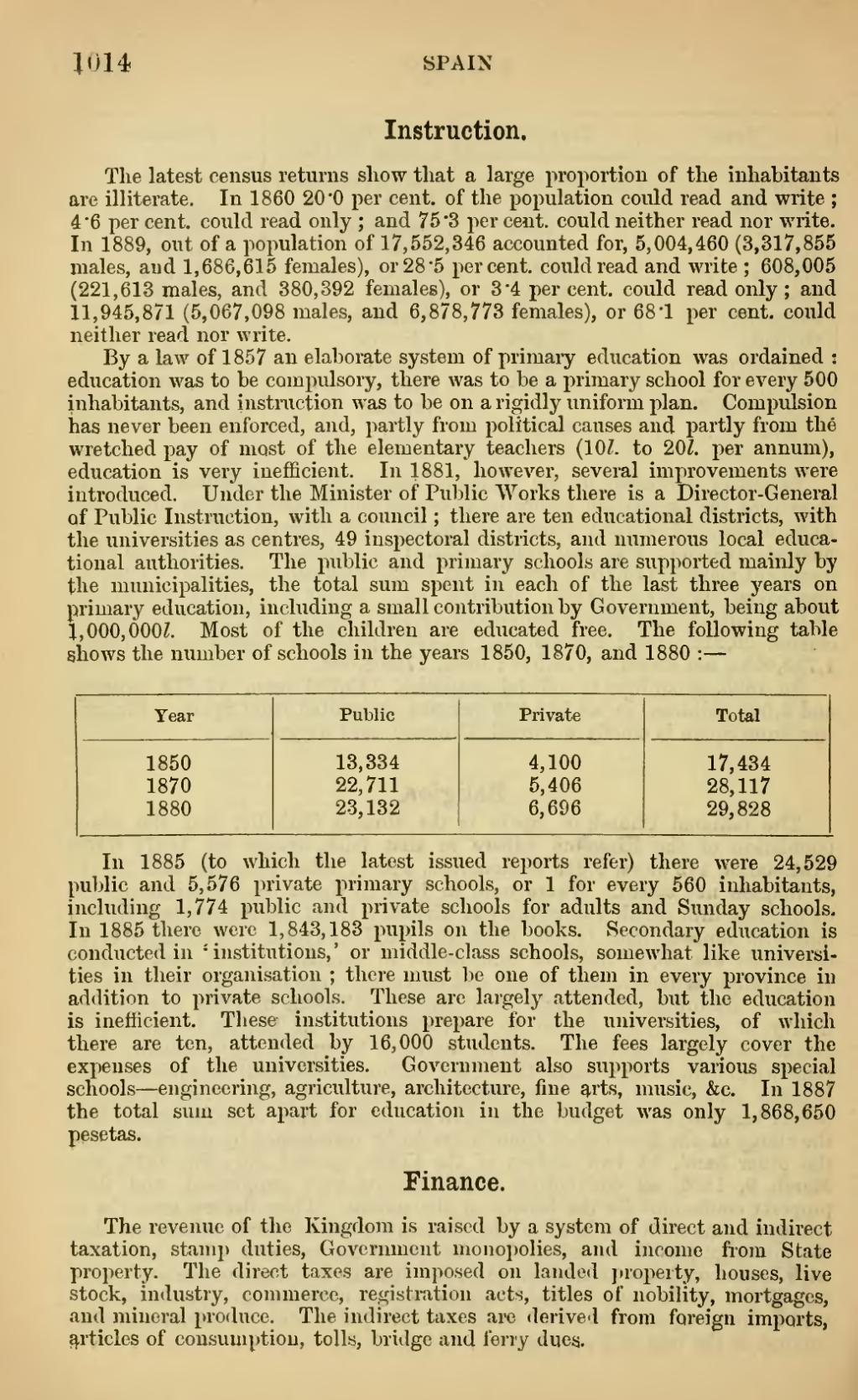VjU
SPAIN
Instruction.
The latest census returns show that a large proportion of the inhabitants are illiterate. In 1860 20 '0 per cent, of the population could read and write ; 4 '6 per cent, could read only ; and 75 "3 per cent, could neither read nor write. In 1889, out of a population of 17,552,346 accounted for, 5,004,460 (3,317,855 males, and 1,686,615 females), or 28 '5 percent, could read and write ; 608,005 (221,613 males, and 380,392 females), or 3 '4 per cent, could read only ; and 11,945,871 (5,067,098 males, and 6,878,773 females), or 681 per cent, could neither read nor write.
By a law of 1857 an elabor£<,te system of primary education was ordained : education was to be compulsory, there was to be a primary school for every 500 inhabitants, and instruction was to be on a rigidly uniform plan. Compiilsion has never been enforced, and, partly from political causes and partly from the wretched pay of most of the elementary teachers (101. to 202. per annum), education is very inefficient. In 1881, however, several improvements were introduced. Under the Minister of Public Works there is a Director-General of Public Instruction, with a council ; there are ten educational districts, with the universities as centres, 49 inspectoral districts, and numerous local educa- tional authorities. The public and primary schools are supported mainly by the municipalities, the total sum spent in each of the last three years on primary education, including a small contribution by Government, being about 1,000,000Z. Most of the children are educated free. The following table shows the number of schools in the years 1850, 1870, and 1880 : —
Year
Public
Private
Total
1850 1870 1880
13,334 22,711 23,132
4,100 5,406 6,696
17,434 28,117 29,828
In 1885 (to which the latest issued reports refer) there were 24,529 public and 5,576 private primary schools, or 1 for every 560 inhabitants, including 1,774 public and private schools for adults and Sunday schools. In 1885 there were 1,843,183 pupils on the books. Secondary education is conducted in 'institutions,' or middle-class schools, somewhat like universi- ties in their organisation ; there must be one of them in every province in addition to private schools. These are largely attended, but the education is inefficient. These institutions prepare for the universities, of which there are ten, attended by 16,000 students. The fees largely cover the expenses of the universities. Government also supports various special schools — engineering, agriculture, architecture, fine 9,rts, music, &c. In 1887 the total sum set apart for education in the budget was only 1,868,650 pesetas.
Finance.
The revenue of the Kingdom is raised by a system of direct and indirect taxation, .stamp duties, Government monopolies, and income from State property. The direct taxes are imposed on landed jtroperty, houses, live stock, industry, commerce, registration acts, titles of nobility, mortgages, and mineral produce. The indirect taxes are derived from foreign imports, q-rticles of consumption, tolls, bridge and lorry dues.
